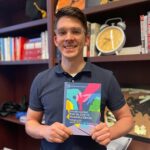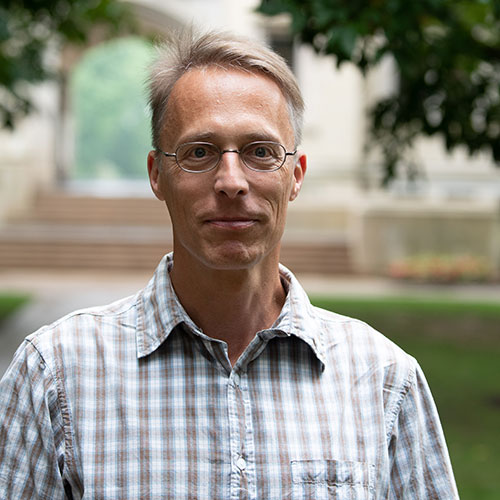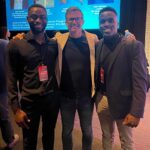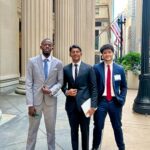
Research of interdisciplinary chemistry, physics, and computer science team produces publication in Frontiers of Physics

Interdisciplinary research by a team of five faculty members and two students from The College of Wooster recreated a gravitational astrophysical phenomenon in a Petri dish with the results published in the January 2024 issue of Frontiers in Physics. Visualizing light waves with chemical waves, the team was able to replicate similar behavior to how light waves bend and move around black holes, other galaxies, or other sources of strong gravity.
The article, “Chemistry does general relativity: reaction-diffusion waves can model gravitational lensing,” was the work of the collaborative team led by Niklas Manz, associate professor of physics, who is an experimental physicist working mainly with chemical systems. Other team members included students Daniel Cohen-Cobos ’23, a physics and computer science double major at the time, and Kiyomi Sanders, a 2022 summer physics intern at the College; and faculty members, Laura DeGroot, assistant professor of physics, who is an astrophysicist; Heather Guarnera, assistant professor of computer science, who was Cohen-Cobos’ advisor and helped with coding; Cody Leary, associate professor of physics, whose expertise is in general relativity; and John F. Lindner, professor emeritus of physics, who worked on simulations and visualizing the results.
The research is significant because it was the first time at Wooster and beyond that chemistry has been used to visualize an astrophysical phenomenon, Manz said. Chemists often use physical tools, such as MRIs, to do their research. He uses chemistry to explore physical phenomena, in this case, gravitational lensing, the general relativistic phenomenon where a massive object redirects light rays emanating from behind the object, creating virtual images of the original light source.
Manz read about research that used fabric over big drums and a high-speed camera to document that surface waves moved through/around dips and came out on the other side at a different angle. Because that research process was complicated, he had the idea to simplify the process by using an acrylic mold that he had used in his doctoral research more than 20 years earlier. Instead of using mechanical surface waves that move fast, Manz used a simpler system that used reaction-diffusion Belousov-Zhabotinsky (BZ) chemistry whose waves move two to three millimeters a minute. “It’s really nice that you don’t need fancy equipment; we just took a picture every second and that was enough to analyze the data,” he explained.
For the research, Sanders used the acrylic glass mold that Manz used in his doctoral thesis and brought with him to Wooster when he joined the faculty eight years ago. He described the mold as a curved quasi-two-dimensional system similar to two parallel glass plates with a chemical system in between. Waves can propagate within the liquid in the two-dimensional area. “What you have are planar surfaces and something like little hemispheres which are also two dimensional, with the upper and lower curves exactly opposite,” Manz said.
Sanders collected all the necessary experimental data and Cohen-Cobos completed the simulation to study the astronomical effect in this table-top environment. “Daniel had worked with me in the lab before, then we decided for his senior I.S., he could do the simulation and be a part of putting together a nice publication,” Manz said. Cohen-Cobos is currently working on a master’s degree in physics at California State University, Long Beach.
After Cohen-Cobos completed the simulations, Lindner was called for his expertise. “We all have our niche areas of knowledge. When we come together, it can create beautiful results,” Manz said describing the images created to explain the research results. “At Wooster, we can talk to our colleagues and do interdisciplinary research. We were all part of a team.”
In addition to the collaborative effort on a published article, Manz said it’s also important to recognize that when the College supports research, the successes are valuable for the students and the faculty. The students gain valuable skills through the research, and the faculty benefit from having I.S. students for two semesters. “They can really move our research forward and that’s nice,” he said.
Posted in News on February 12, 2024.
Related Posts
Related Areas of Study
Chemical Physics
An interdisciplinary approach to the fields of chemistry and physics using mathematical techniques
MajorPhysics
With one-on-one guidance from a faculty mentor, every physics major completes independent research in a year-long research project
Major MinorComputer Science
Solve complex problems with creative solutions using computer programming and applications
Major MinorChemistry
Access to labs, research opportunities, and small classes give chemistry majors lots of options after graduation.
Major Minor

